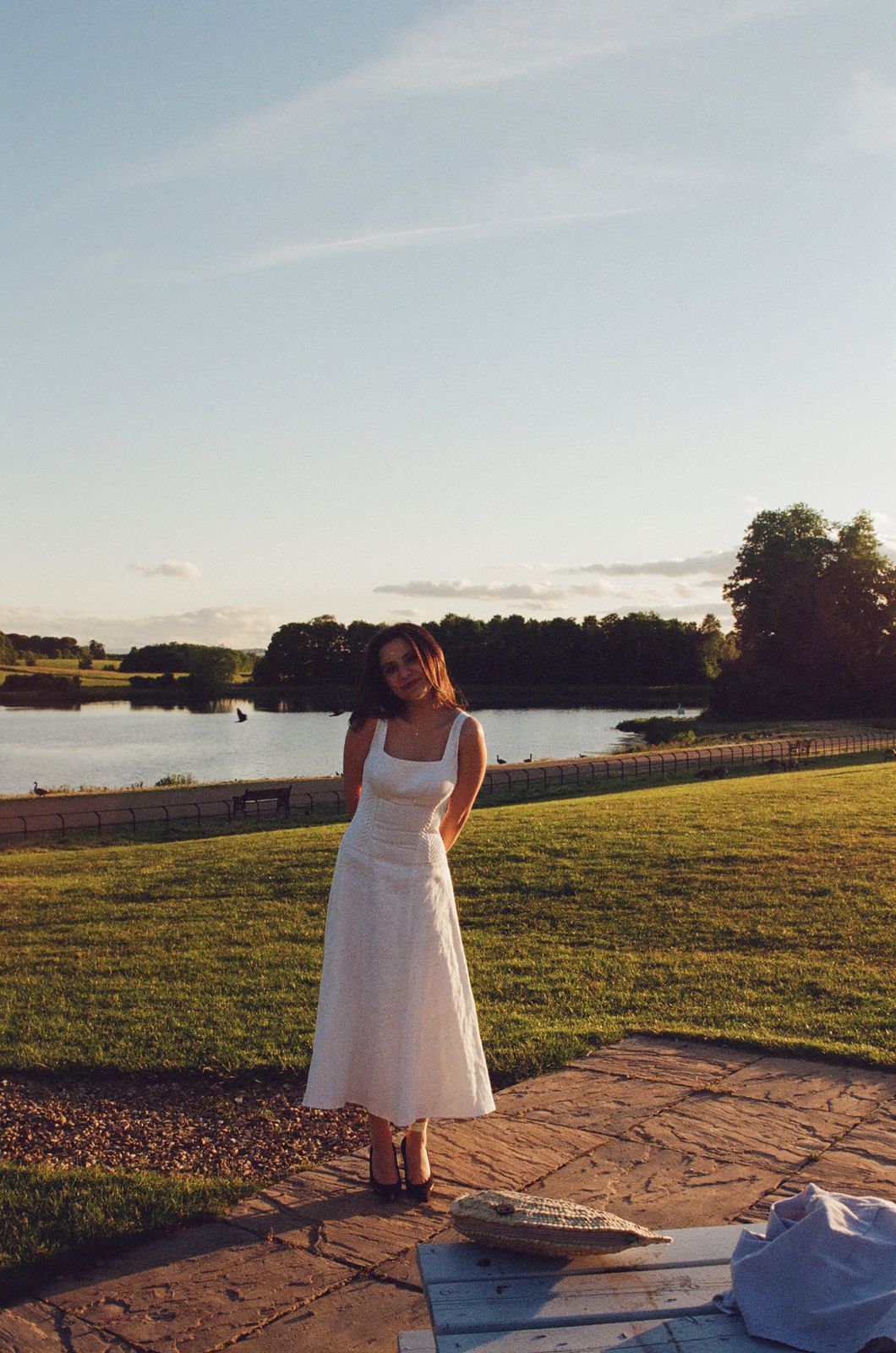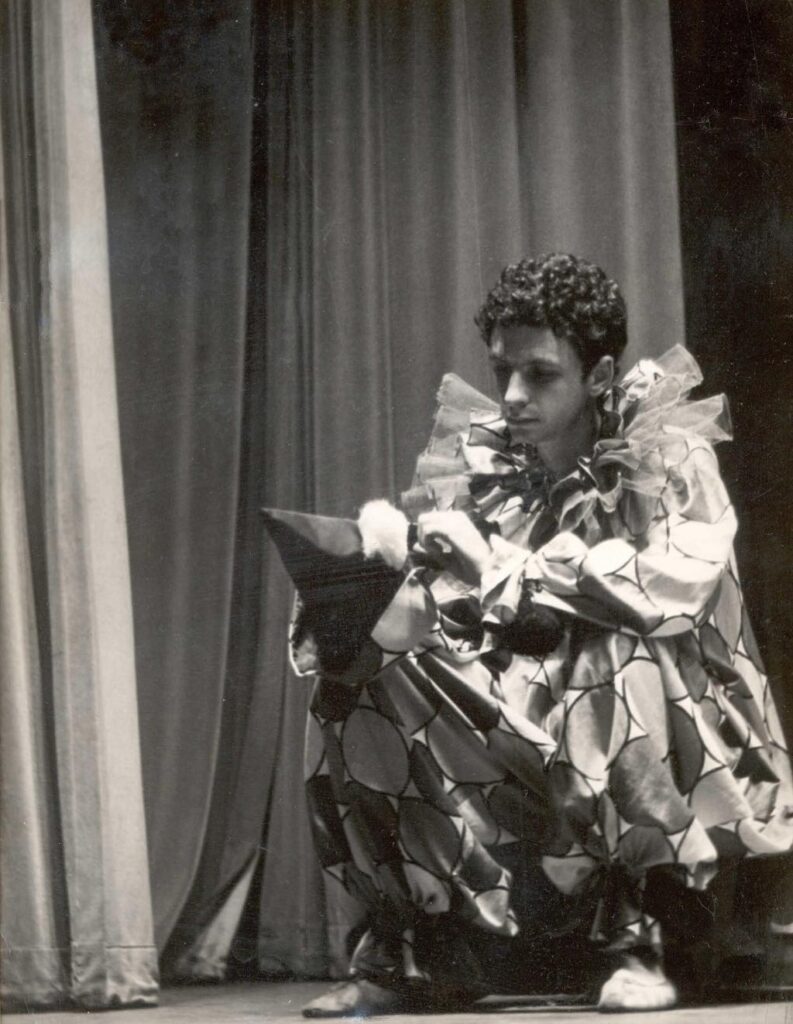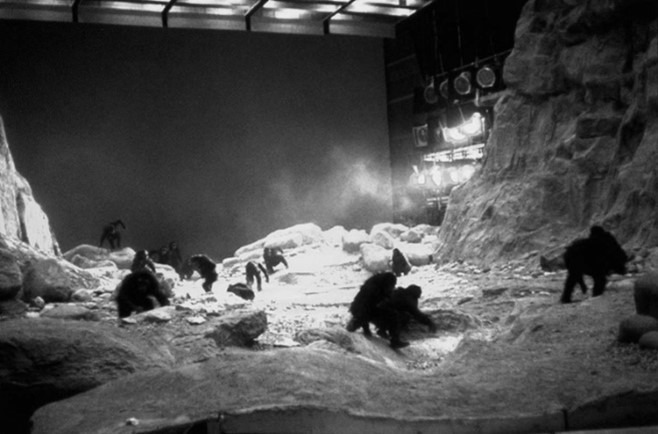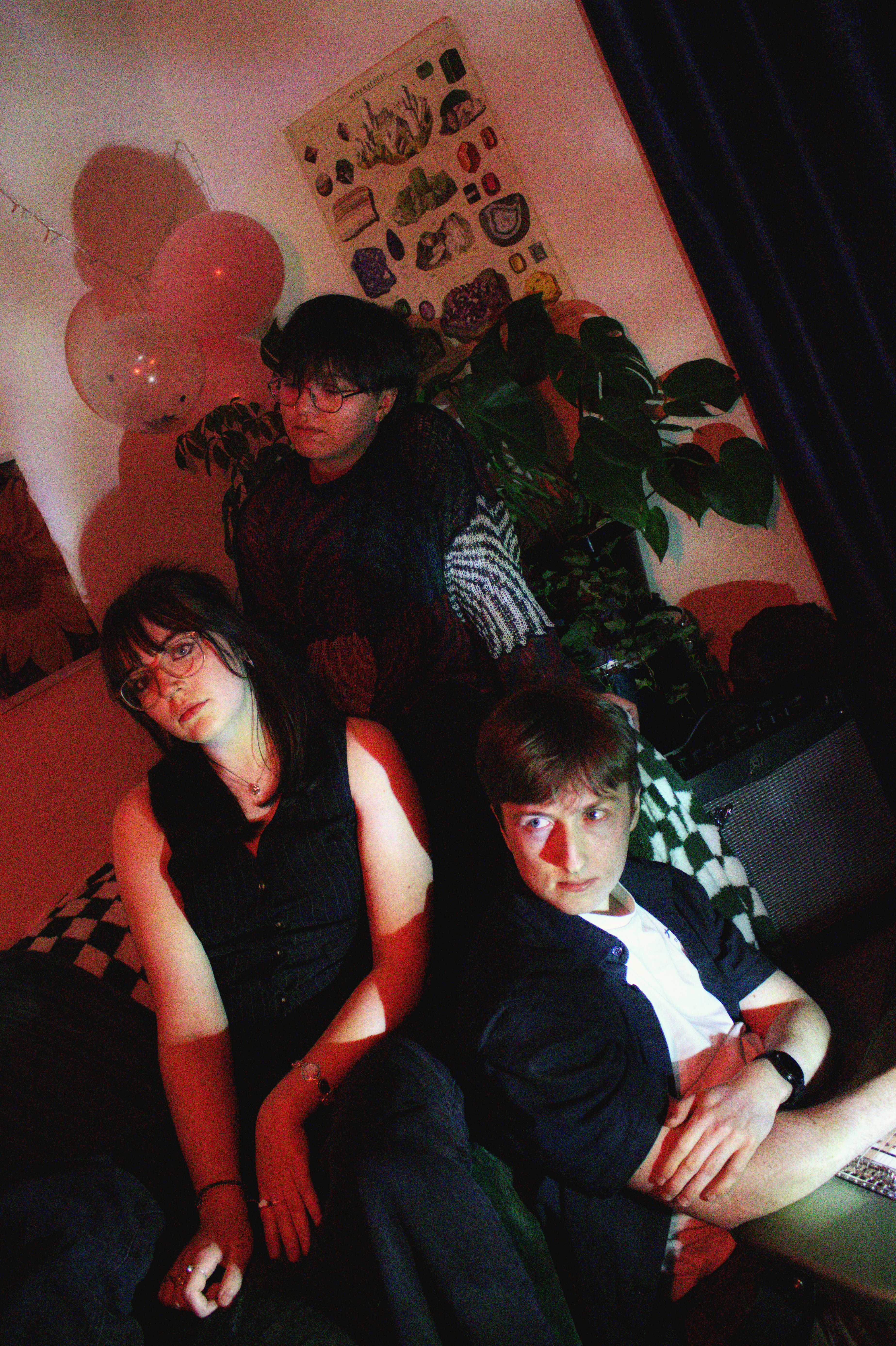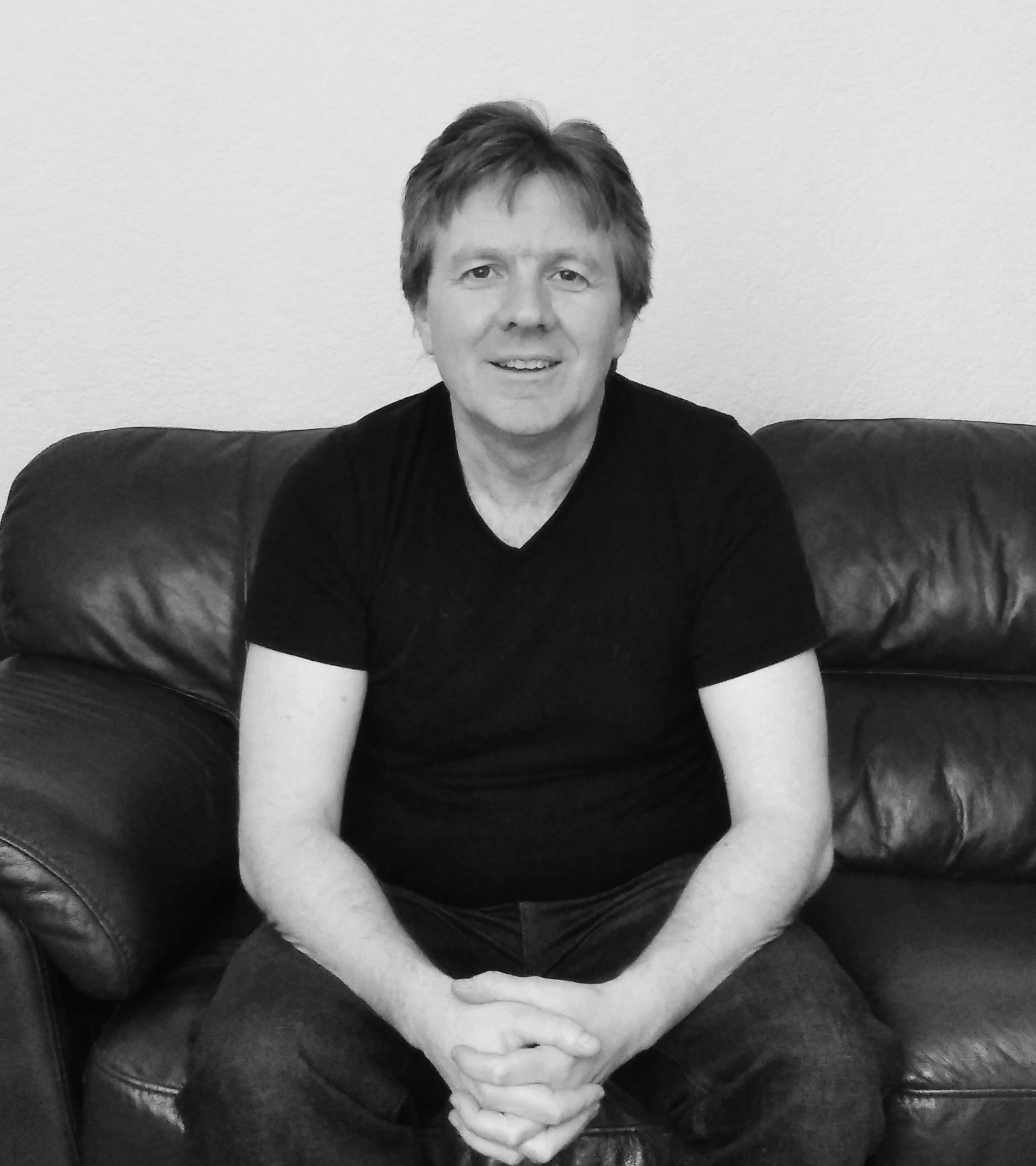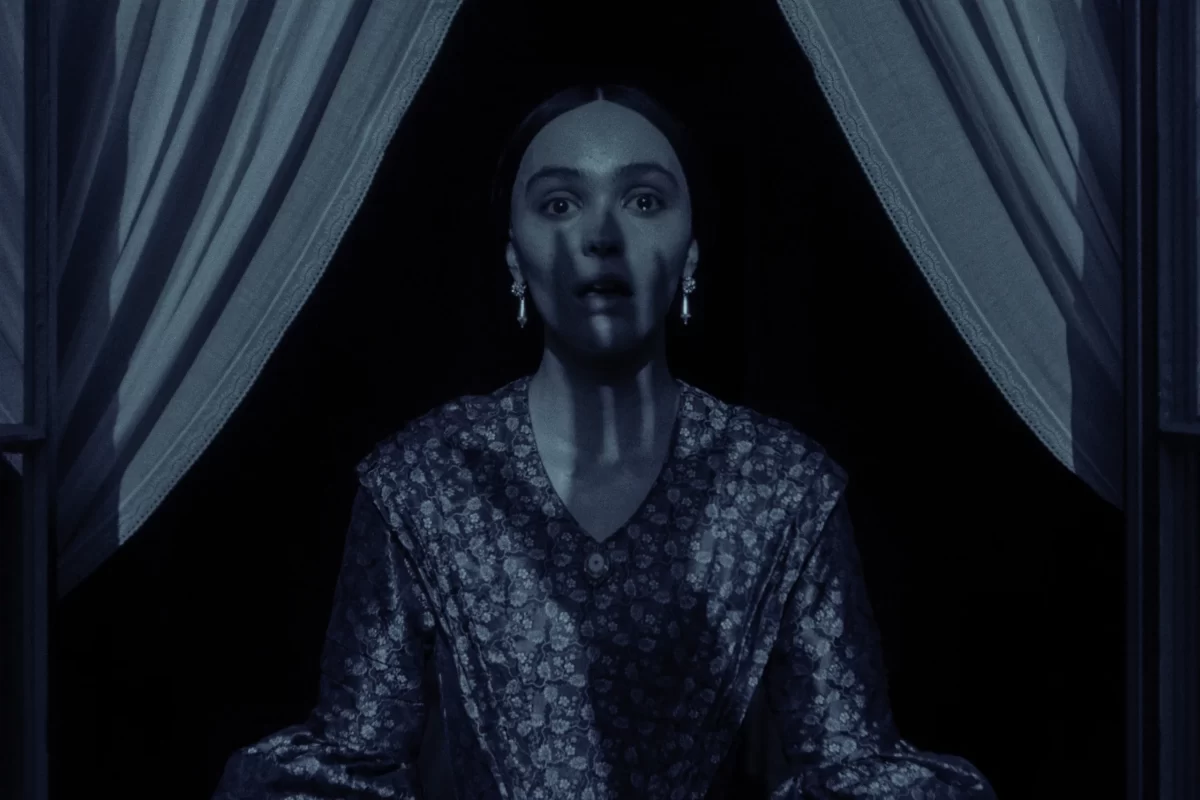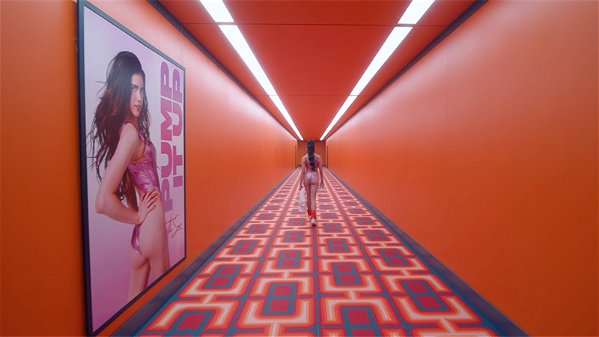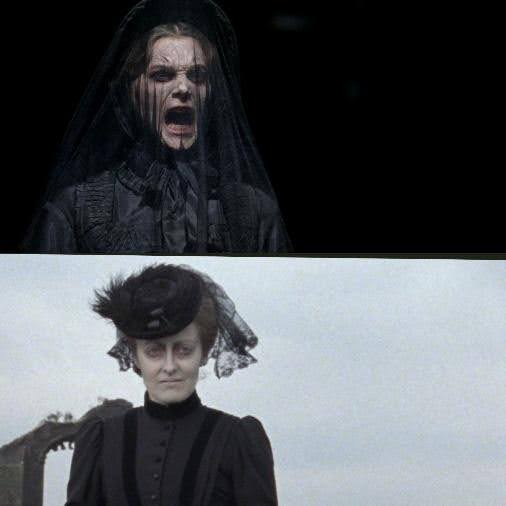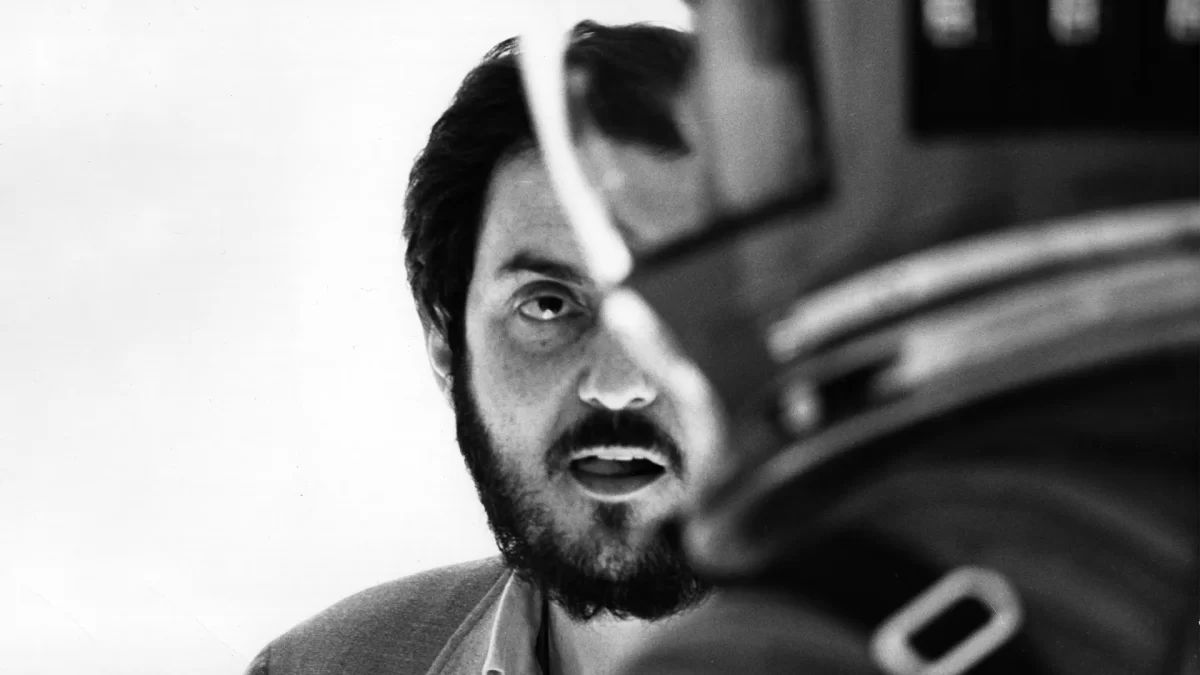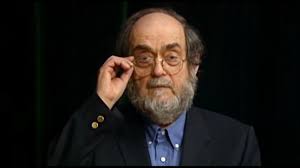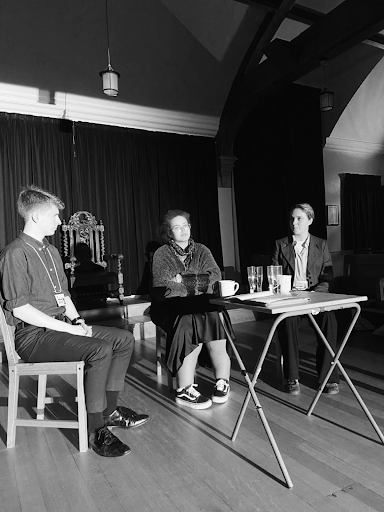By Edward Bayliss
Rob Ager is an internet film critic and analyst
Known for his rigorous and penetrating insights into the sci-fi and horror genres in particular, Rob has been credited with pioneering the video movie critique. Starting in 2007, he has grown an impressive following of 359,000 subscribers across his YouTube channels, and has featured in the New York Times, Time Entertainment, Indiewire, and The Irish Times, to name a few.
I met Rob over Zoom for a ninety minute conversation on 30th January.
Rob is wearing a blue polo shirt – the colour matching almost exactly with the acoustic soundproofing panels mounted on the rear wall of his studio. A microphone arm protrudes from the bottom of the frame. He meets his mic with the question of whether his sound and lighting are okay. I smile to myself in the knowledge that these are aspects of a shot he must have considered hundreds of times. His voice clear and his face lit well, I affirm, and we begin the interview.
I thank him for taking the time to entertain such a small publication as ours, and begin with how and why he started his film critiquing career. Rob tells me that he ‘was writing, producing, directing [and] editing short films’ and ‘had also been working in mental health for many years so there was a lot of psychology in my life’. The latter of which, he adds, ‘started to blend in with the filmmaking’, affording him expertise in breaking down the nuance of character in film. Fondly, he recalls that he ‘started studying the masters, Hitchcock, Kubrick, and Lynch’, discovering that he had a keen eye for detail. He tells me confidently that he was ‘so impressed with the things I was finding in the films, that I thought I’ve got to share this to the world.’ YouTube was in its embryonic stages when Rob first began uploading videos, so for him, it was unchartered waters. Wearing a grin, Rob says that he ‘started at the channel on there thinking maybe a few hundred film makers will be interested in this and everyone else will just go ‘you’re a lunatic’ and, you know, just some obsessive compulsive nut but now, a couple of months later there were 10,000 subscribers and it all just snowballed from there.’
I congratulate Rob on his sizable YouTube following, and ask him what he owes his success to. Unexpectedly, he shrugs off my praise, and says earnestly, that ‘when you look at some other channels you’ve got on YouTube, they’ve got way bigger subscriber amounts than I have so I don’t really consider it to be all that impressive.’ He has been ‘limited by a number of factors’; namely, that his content doesn’t ‘lend itself to the click bait fast food video type’, with ‘thumbnail pictures where you’ve got a big arrow pointing at something and a big emotional word… I hate all that’. Rob trails off, lamenting the fact that ‘people are having to do things like that just to be noticed.’ I remind him of my original question.
Rob says that some of the debt of his success is owed to people’s conception of the ‘English academic’. Expanding on this, he suspects that people from abroad might assume ‘‘oh this guy is British’, and they automatically associate intelligence and being cultured but here in Britain I’m a Scouser, and I’m a scumbag, so people outside of Britain refer to my work as scholarly which it’s not because I’m not an academic.’ Though he might not be a scholar per se, Rob suggests that his work was and is ‘more sort of scholarly’ than most of his competitors. His originality, or ‘freshness’ has assured his popularity (in 2021, Esquire credited him with first developing the theory of child sexual abuse in The Shining), and though he doesn’t use ‘fancy video editing’, he reminds me that it is ‘the concepts that sell’. Indeed, Rob’s website is almost as austere as a car manual, but importantly, it’s absolutely clear in its direction.
Next, we move on to the general practice of film criticism, with increases in democratisation and accessibility characterising the profession. Rob is aware that he hasn’t been traditionally schooled in his vocation, though he says that he’s ‘read a lot of biographies of film makers’ (at this moment, he gestures towards a spread of books on Kubrick and others atop a shelf behind him). He’s worked with ‘detailed sources, information, and interviews with people who have worked with filmmakers’, but insists that ‘most of my understanding of film basically ended up coming from making films myself… actually getting involved in the work is very important.’ I tell Rob that there’s definitely a Kubrick quote in there about the importance of picking up a film camera. Ager appeals to many sources for film knowledge; he says that it might sound as though ‘I’m sort of dismissing academia’, which to an extent he does, but still, he respects the fact that ‘there’s plenty of good that comes out of the field.’
When I ask Rob if there are any critics, commentators or analysts in particular that have shaped his modes of inquiry, I half expect him to reel off the usual suspects of Ebert, Siskel, and maybe even Kermode. Instead, he says dismissively that ‘there aren’t really any film critics I would go to for that.’ He shares anecdotal experiences that inspired him such as watching fellow Liverpudlian Alex Cox, whose TV show would ‘take a classic cult movie’ and would give a ‘breakdown about the production and some interpretations’. Rob also mentions script writer Robert McKee whose series he also watched in his teens. A formative moment came when Rob watched one of Mckee’s episodes on Terminator. Smiling, he remembers the presenter drawing attention to the human qualities of the robot; ‘why would the robot fix its hair – this creature has vanity.’ The psychological implications of film were also brought to Rob’s attention by his father who would ‘point things out in Hitchcock’s movies.’ Again though, Rob reiterates the centrality of biographies to his research and understanding of film.
The role of critics or reviews in Rob’s world seems a small one. He doesn’t care much for reviews, arguing that ‘today’s marketing involves a hell of a lot of false advertising online, and I do think there are quite a few critics out there who in one way or another are taking a backhander in order to give a positive review.’ Despite the ‘nefarious’ nature of these suspicions, Rob explains the practicalities of this process: ‘some particular film review magazine – they have relationships with the film studios and if they give a really scathing review of some movie they might not get the exclusive interviews for the next movie that comes out from the studio, and that’s true of reviewing across the board with a lot of things.’
Rob is known well for his reluctance to explain his methods of ‘decoding’ films; I ask him if this is because the industry is so competitive. In short, the answer is yes. Some of these channels he says have ‘dozens of regular writers… putting out four or five very slickly edited videos a week’, and much of their content is ‘copied across’ from other channels ‘so they can get views’. Rob draws my attention to an incident of intellectual property theft that the channel ‘ScreenPrism’, now called ‘The Take’, committed. He says that ‘one of their writers just basically lifted their entire study of The Shining from my online article and pretty much everything in it was taken from [me]’. The video was taken down and blame games were played between ScreenPrism writers and producers.
Most of Rob’s analysis has landed on films in the horror and science fiction genres. His most famous videos have focussed on films such as The Shining, 2001: A Space Odyssey, The Thing, The Silence of the Lambs, and The Exorcist. When questioned as to why this is the case, he remarks that ‘they’re allowed to bend reality a lot more than straight drama.’ Here, Rob’s investment and experience in psychology comes to the fore. For him, these genres ‘allow an exploration of the dark aspects of human nature… in a safe fiction form’.
Kubrick is often seen as the ‘king of genre’ – a jack of all trades and master of some. Not least from his well-renowned article, ‘Lessons from Stanley’ and weighty catalogue of criticism on Kubrick’s filmography, Rob’s interest in the director is common knowledge. I think Ager sees much of himself in Kubrick; not in self-aggrandising terms, but in their shared disillusion with schooling or ‘academia’ and pursuit instead of individual study. He notes how Kubrick ‘breezed into college and breezed back out in the end… and he basically became self-educated.’ Ager recognises the dizzying intellect of Kubrick, how he became ‘obsessed with self-education’, and how, amusingly, ‘it scares me to think what damage he could have done in the world if he was a bad person.’ Rob is intrigued by the ‘carefully crafted secrecy’ of the director, adding that he didn’t answer to anyone, ‘not even his collaborators’. This behaviour was spurred on by Kubrick’s experience filming Spartacus, wherein he came under a great deal of ‘nasty cast and crew members’; Rob suspects that this made him ‘think even more like a chess player’ – a telling image when we come to think of Kubrick. I bring up the Kubrick Exhibition in London’s Design Museum, and we share our awe at the mountains of cabinets which housed the director’s research for the sadly unreleased Napoleon. When Rob isn’t dissecting the films of the lofty Kubrick et al with his psychological scalpel, he enjoys ‘tonnes of movies’ where he doesn’t ‘see this kind of depth’ – the first two instalments of the Rambo franchise being examples.
I probe further into Ager’s understanding of the psychological role of films in our culture. Cinema, for Rob, is a way to ‘learn about the world in a casual enjoyable way that is not restricted to words.’ He adds that ‘reading a published study can be fantastic […] but people like to experience something on a non-verbal level’. Fiction affords the possibility of allegory: ‘we know it’s fake, we know it didn’t really happen’, but essentially, ‘it relates to our own lives’ and ‘gives us a different way of considering our own personal lives.’ Rob leans further back into his chair, and boomerangs back to Kubrick. Doctor Strangelove is ‘as good as an academic book’ on the Cold War, though the film simply ‘communicates it in a different format’. ‘If you want to learn about the criminal mindset, watch A Clockwork Orange, or the nature of conspiracy theories, watch Eyes Wide Shut’ Rob urges. He considers the filmography of Kubrick to be tantamount to any written journal on the same psychological subjects.
Inevitably, I too can’t help but return to Kubrick. A man who has been so often associated with myth and legend, who has been resigned to the realm of ‘the recluse, the misanthrope, the phobic, the paranoid, the museum piece.’ I ask Rob if he thinks there is a danger of sensationalising and over-speculating the character of Kubrick. I have in mind a two part video series that Ager released recently, titled: ‘Was Stanley Kubrick Killed?’ His ‘manipulative mind’ and his ‘genius’ are aspects of the director we should be wary of; Ager warns. Kubrick’s methods on set were unorthodox – Rob ‘disagree[s]’ with the mistreatment of actors, and draws attention to the strange facts that despite Kubrick’s extraordinary IQ, he killed himself with his ‘smoking habits’ and diet, and as a ‘family man’ who, while making Eyes Wide Shut of all films, failed to foresee his daughter running off to a Scientology cult. That Ager lends even a voice (while dismissing its claims) to the notion that Kubrick might have been murdered seems strange considering his otherwise concern for the mythologising of the director. I remind myself that this video series has almost 350k views.
Ager bemoans the politicisation of cinema, it being one of the ‘26 reasons why modern movies are so awful’ (another of Ager’s videos). He stresses that the public entertainment industry is not the place for party politics, yet, ‘politics has seeped so heavily into everything in our culture these days […] it’s beyond boring.’ It seems the apple is rotten, inside and out, with actors, producers and directors all ‘trying to manipulate us into supporting whatever political candidate they support.’
The overuse of CGI is concerning, as is the use of artificial intelligence ‘to create videos’, which Rob describes brilliantly, as ‘awesomely lame.’ AI and CGI have been ‘getting films away from reality’ where he would rather see ‘flesh and blood, people in front of a camera, in an actual room.’ Rob says that the expensive technical standards are wholly unnecessary; neither Laurel and Hardy nor the Marx Brothers had it. Too many films these days look like ‘shampoo adverts’, wages Ager, furthering his point with the proposition that a film needs only good characters and a good story to succeed.
Another problem facing the industry is that of the ‘Easter egg’. This feature of films was once a ‘subliminal’ effort of directors to tap into the subconscious of viewers, but has now become a sickly stunt ‘for the sake of marketing’, wherein ‘people on YouTube’ can now hunt for tokenistic references and nods, according to Ager. I mention to Rob that this is how I felt about Coralie Fargeat’s The Substance with its insistence on ‘paying homage’ to just about every horror film ever made, losing all credentials of originality in the process. He nods his head in agreement, furthering the notion that there is a level of self-consciousness from directors that renders subliminal messaging void. When he made his first independent feature film in 2012 (Turn in Your Grave) Rob admits with a knowing grin that he ‘absolutely overdid the self-conscious subliminal thing.’
Rob’s expertise lies in seeing things others don’t – he is credited as the originator of the now widely accepted child sexual abuse theory of Danny in Kubrick’s The Shining, and has produced groundbreaking commentary on ‘the monolith as the cinema screen’ in the same director’s 2001: A Space Odyssey. Where people have often levelled the criticism that Ager sees things that aren’t there, they often later discover that his findings are meticulously researched and stand atop a sturdy wall of evidence.
Dan Leberg, of the University of Toronto’s Cinema Studies Institute, however, fails to recognise Ager as a valid film critic and analyst. His attack, in a long-form piece published in 2011 (and the most formal assault on Ager’s mode), calls out the critic as a ‘fanboy in the ivory tower’, ‘mediaphiliac’, ‘pseudo-intellectual’, ‘eccentric’, and ‘un-serious’. Leberg’s article begins anecdotally when on his first day of teaching, ‘one of my students informed me that the tutorial discussion I had so laboriously planned on Stanley Kubrick’s 2001: A Space Odyssey (1968) was a moot point because of a YouTube clip she had seen the night before.’ This turned out to be Ager’s hundreds-of-thousands-times-watched analysis of the same film. Importantly, Ager declares on his website (which itself has about 5000 words detailing his past, experience, and credentials – something he tells me is ‘necessary’) that it would be a mistake to put him on an ‘intellectual pedestal’. Rob explains to me that ‘some of my favourite intellectuals of all time are academics’, though there are ‘pitfalls in academia’, highlighting that the route into such a world was never accessible to him, given his upbringing in ‘poverty stricken parts of Liverpool.’ He adds that there is a great deal of ‘snobbishness’ associated with the university educated, and that there’s ‘academics who just want the title of being an academic so that they can claim intellectual superiority over others.’ Rob believes that Dan Leberg falls into this camp. Ager’s commitment to ‘self-educating’ has led him to harbour a ‘distrust’ of much of what traditional academia has to offer. Leberg accused Rob of plagiarism and copyright infringement even though Ager has persistently defended himself with the statement that ‘I’ve never said that I was the only person who had made this discovery [concerning the monolith in 2001: A Space Odyssey]’. Rob then brings to my attention the ridiculous notion ‘that only an academic can do a serious study of a movie that was made by a non-academic [Kubrick]’. Interestingly, Ager’s content has been used widely amongst academic institutions. A lecturer at Ohio State University used Ager’s material to teach their students in an ‘undergraduate Kubrick class’, and Ager received ‘a batch of fifteen or so thank you letters’ from their class subsequently. Rob has also, he tells me, been consulted by many academics including the well-reputed Diana Walsh Pasulka, for her book American Cosmic – you can observe the 144 instances of Ager’s work being used by media, academics, websites, and blogs, on his website. This all seems to paint a robust portrait of Rob Ager, the qualified critic.
Ninety minutes have elapsed since Rob asked me if his lighting was okay. The sun, now further along its track and beginning to settle, casts more distinct shadows on Rob’s studio wall. We finish the interview with the usual gestures of thanks and appreciation. Looking now at the mirror of my black screened laptop, I cannot help but see Ager as the most qualified unqualified critic, the film-fanatic fanboy, but also the clinically disposed and professional analyst.

